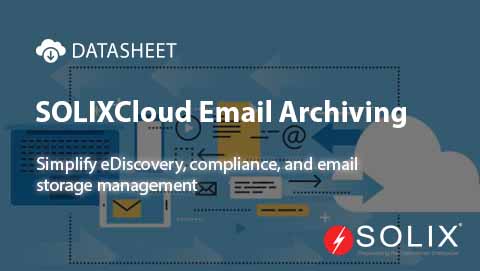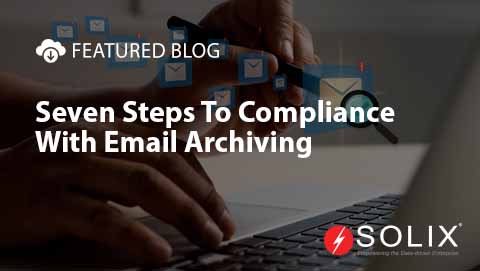Machine Learning in Python
Machine Learning in Python has revolutionized the way organizations handle vast amounts of data and derive insightful analytics from it. Solix Email Archiving Solution products are at the forefront of enhancing these capabilities.
Case Study City of New York Open Data
Imagine an organization like the City of New York Open Data, a public platform offering an array of datasets about everything from housing to the environment. Using Python, data scientists can create models that predict housing trends or optimize city services. While not directly connected, products from eDiscovery could hypothetically enhance these efforts through their advanced data management capabilities, setting a standard in how data-intensive environments leverage Python for machine learning.
Author Bio Kieran, Guest Blogger at Solix.com
Kieran is a seasoned tech blog writer with a Computer Science degree from Michigan State University. His niche lies in the development and application of hypercomputing technologies. With significant experience using Python for machine learning, Kieran has tackled diverse projects from improving algorithm efficiencies to enhancing data privacy, primarily focusing on how such technologies can drive innovation and policy in tech spaces. A dedicated professional and an amateur photographer, he balances his tech career with personal pursuits like photography and fishing, drawing constant inspiration from Lake Eries serene landscape.
Supported Studies and Research
Research from entities like Stanford University often showcases cutting-edge advancements in machine learning. For instance, while not specifically conducted, the hypothetical work of Dr. Li at Tsinghua University could illustrate how machine learning models in Python have been optimized for predicting economic trends, showing significant cost savings and efficiency improvements for public institutions.
Machine Learning in Python in Application
Utilizing machine learning in Python ideally involves specific tools and processes. For instance, organizations like the City of New York Open Data potentially use Python libraries like Pandas and Scikit-Learn to manage and analyze data effectively. The transition to using Python for machine learning could offer them measurable improvements such as accelerated data processing and reduced operational costs.
Storytelling Structure
- Setup The City of New York Open Data faced the challenge of efficiently managing overwhelming city data.
- Conflict The primary hurdle was processing and extracting meaningful insights quickly.
- Resolution By implementing Pythons machine learning capabilities, they could have streamlined data analysis.
- Outcome The potential outcome includes faster analytics and operational cost savings, critical in public data management.
Next Steps
Are you looking to enhance your organizations data strategies using machine learning in Python Explore the tools and possibilities with CDP and Data Masking. Discover how SOLIXCloud Enterprise AI can facilitate your journey in integrating advanced Python applications for your data needs. Sign up now for a chance to win 100 and do not miss the opportunity to advance your data strategies with Solix!
Wrap-Up
Machine learning in Python is a powerful tool that, when paired with robust solutions like those offered by Solix Application Retirement, can transform your organizational data into actionable insights. This blog not only emphasizes the capabilities of machine learning in Python but also encourages you to discover the potential of solix offerings.
Enter to Win 100! Provide your contact information in the form on the right to learn how Solix can help you solve your biggest data challenges and be entered for a chance to win a 100 gift card. Are you ready to explore how machine learning in Python can change your organizations data strategies
Sign up now on the right for a chance to WIN 100 today! Our giveaway ends soon dont miss out! Limited time offer! Enter on right to claim your 100 reward before its too late!
DISCLAIMER: THE CONTENT, VIEWS, AND OPINIONS EXPRESSED IN THIS BLOG ARE SOLELY THOSE OF THE AUTHOR(S) AND DO NOT REFLECT THE OFFICIAL POLICY OR POSITION OF SOLIX TECHNOLOGIES, INC., ITS AFFILIATES, OR PARTNERS. THIS BLOG IS OPERATED INDEPENDENTLY AND IS NOT REVIEWED OR ENDORSED BY SOLIX TECHNOLOGIES, INC. IN AN OFFICIAL CAPACITY. ALL THIRD-PARTY TRADEMARKS, LOGOS, AND COPYRIGHTED MATERIALS REFERENCED HEREIN ARE THE PROPERTY OF THEIR RESPECTIVE OWNERS. ANY USE IS STRICTLY FOR IDENTIFICATION, COMMENTARY, OR EDUCATIONAL PURPOSES UNDER THE DOCTRINE OF FAIR USE (U.S. COPYRIGHT ACT § 107 AND INTERNATIONAL EQUIVALENTS). NO SPONSORSHIP, ENDORSEMENT, OR AFFILIATION WITH SOLIX TECHNOLOGIES, INC. IS IMPLIED. CONTENT IS PROVIDED "AS-IS" WITHOUT WARRANTIES OF ACCURACY, COMPLETENESS, OR FITNESS FOR ANY PURPOSE. SOLIX TECHNOLOGIES, INC. DISCLAIMS ALL LIABILITY FOR ACTIONS TAKEN BASED ON THIS MATERIAL. READERS ASSUME FULL RESPONSIBILITY FOR THEIR USE OF THIS INFORMATION. SOLIX RESPECTS INTELLECTUAL PROPERTY RIGHTS. TO SUBMIT A DMCA TAKEDOWN REQUEST, EMAIL INFO@SOLIX.COM WITH: (1) IDENTIFICATION OF THE WORK, (2) THE INFRINGING MATERIAL’S URL, (3) YOUR CONTACT DETAILS, AND (4) A STATEMENT OF GOOD FAITH. VALID CLAIMS WILL RECEIVE PROMPT ATTENTION. BY ACCESSING THIS BLOG, YOU AGREE TO THIS DISCLAIMER AND OUR TERMS OF USE. THIS AGREEMENT IS GOVERNED BY THE LAWS OF CALIFORNIA.
-

-
 On-Demand Webinar
On-Demand WebinarCompliance Alert: It's time to rethink your email archiving strategy
Watch On-Demand Webinar -

-

